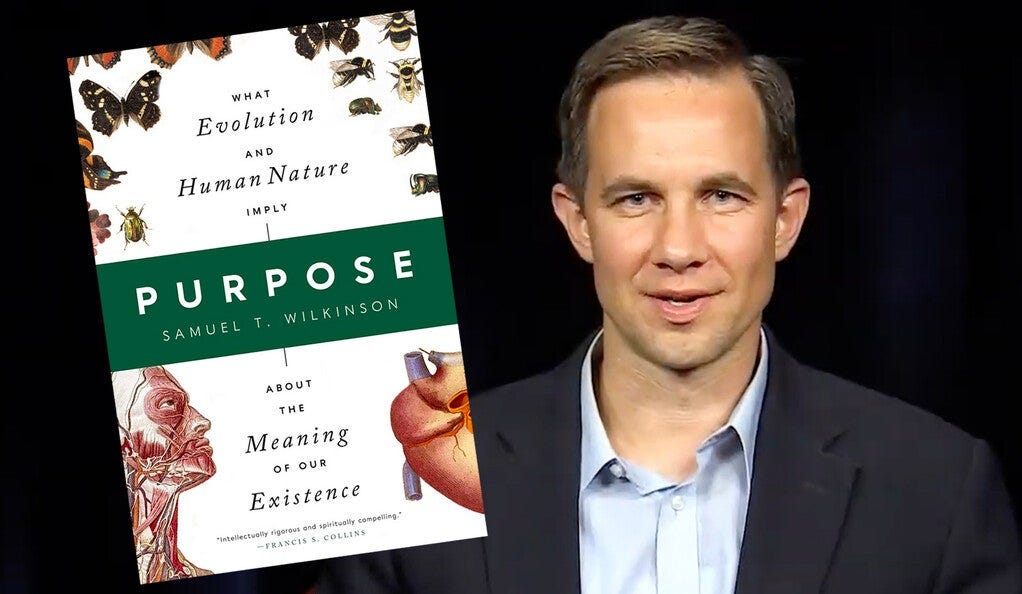Repronews #21: Lancet forecasts Sub-Saharan Africa to make up ~54% of births by 2100
Therapeutic gene editing; European approaches to selection for PRS; genetic enhancement debates; US IVF debate; boosting Parsi fertility; genetics of mindfulness, non-verbal IQ & myopia

The weekly Reprogenetics News Roundup is hereby retroactively known as Repronews! Highlights from this week’s absolutely packed edition:
Repro/genetics
Arguing for heritable human genome editing for serious conditions
Most European countries’ legal approaches seem to discourage or ban preimplantation testing for polygenic scores
Genetic enhancement technologies expand reproductive freedom
The case for global governance of genetic enhancement technologies
US society for reproductive medicines testifies in Senate in favor of IVF
Heritage Foundation argues IVF should be regulated to save embryos
The Guardian reports on progress towards in vitro gametogenesis (IVG)
Population Policies & Trends
The Lancet forecasts that most nations will have naturally declining populations by 2050 and, by 2100, almost 80% of births worldwide will be in lower-income countries, including over 50% in Sub-Saharan Africa
India’s Ministry of Minority Affairs has program to boost fertility among the declining Parsi minority (fertility rate of 0.8)
A study of European and Canadian women finds that women having children earlier tend to have more children
Genetic Studies
A study found mindfulness and well-being are partly based on a shared genetic origin
A large Chinese study found an association between high nonverbal IQ and myopia
Further Learning
Overview of Samuel Wilkson’s Purpose: What Evolution and Human Nature Imply
Review of Sujin Lee’s Wombs of Empire: Population Discourses and Biopolitics in Modern Japan
Repro/genetics
“Heritable human genome editing: correction, selection and treatment” (Medical Law Review)
The author argues that heritable human genome editing (HHGE) for serious genetic conditions is best understood, and morally justified, as a form of treatment for prospective parents who strongly desire an unaffected genetically related child and who have no, or poor, other options to achieve this
HHGE would be morally permissible if consistent with that child’s welfare and legalisation is supportable with reference to the right to respect for private and family life under Article 8 of the European Convention on Human Rights.
“Ready for polygenic risk scores? An analysis of regulation of preimplantation genetic testing European countries” (Human Reproduction)
The study explored the permissibility of preimplantation genetic testing using polygenic risk scores (PGT-P) under different European regulatory approaches.
The study provides an overview of the legal and practical regulation of the use of PGT in seven European countries (Belgium, France, Germany, Italy, the Netherlands, Spain, and the United Kingdom) and critically analyses the different approaches with regards to regulatory possibilities for PGT-P.
Three approaches to PGT regulation were found:
Medical indication model: requiring central approval of PGT for each new indication (the UK, the Netherlands)
Individual request model: evaluating each individual PGT request at the local level (France, Germany)
Clinical assessment model: largely leaving decision-making about clinical application of PGT to healthcare professionals (Belgium, Italy, Spain)
In the countries using the medical indication model and the individual requests model, current legal frameworks and PGT criteria seem to exclude PGT-P.
In countries using the clinical assessment model, the fact that healthcare professionals and scientific organizations in Europe are generally negative about implementation of PGT-P due to scientific and socio-ethical concerns, implies that, even if it were legally possible, the chance that PGT-P would be offered in the near future might be low.
“Liberal eugenics, coercion and social pressure” (Enrahonar)
The author argues that genetic prenatal enhancement does not limit reproductive freedom in any importance sense and therefore stigmatizing genetic enhancement as coercive eugenics is unjustified.
The paper discusses in particular the objection to allowing genetic enhancement technologies on grounds that this could lead to “social pressure” for parents to use them. The author argues this possible coercion may be felt by some parents, but that it is less than the actual coercion faced by all parents who may wish to adopt genetic enhancement but are banned from doing so by the State.
“The global governance of genetic enhancement technology: Justification, proposal, and challenges” (Enrahonar)
The article argues that the prospect of human genetic enhancement requires an institutional response,and probably the creation of new institutions.
The author analyzes the debate on and justifies the need for global governance of human genetic enhancement. He justifies this on grounds that:
Scientific activity today transcends national borders.
CRISPR can produces heritable changes in the human genome, which is considered “a common heritage of humankind” and can alter the evolution of the human species.
The regulation of enhancement in some countries will affect others, possibly resulting in genetic and reproductive tourism from one country to another.
The article presents concrete proposals for global governance of genetic enhancement and obstacles to its creation.
“Society for Reproductive Medicine testifies to Senate judiciary committee on threats facing IVF” (ASRM)
The American Society for Reproductive Medicine testified before the Senate Judiciary Committee on the Alabama Supreme Court’s ruling that frozen embryos are legal persons and threat posed to IVF.
Treating embryos as legal children means that patients could face significantly increased costs and additional unnecessary or risky procedures.
ASMR fears other states may follow Alabama’s lead.
“Why the IVF industry must be regulated” (Heritage Foundation)
The conservative Heritage Foundation argues for tighter regulation of IVF and denounces current pratices “amounting to eugenics,” such as preimplantation genetic testing for eye or skin color.
Heritage wants to impose standards to avoid “want or careless destruction” of embryonic life and limit the number of embryos created per IVF round, notably following the practice of Germany (a strongly bioconservative country).
“Scientists move step closer to making IVF eggs from skin cells” (Guardian)
The Guardian reports on recent progress in achieving in vitro gametogenesis (IVG), the making of human gametes (eggs, sperm) from other cells.
The procedure could help infertile women and male couples have biologically-related children.
“Should this technology become clinically viable in the future, it holds the potential to revolutionize IVF and offer hope to many infertile patients who have lost gametes due to disease, ageing or cancer treatments,” said Aleksei Mikhalchenko, lead author of a study on IVG at Oregon Health and Science University.
The procedure may take a decade to perfect and get approved for humans.
More repro/genetics news:
“New menopause prevention drug could delay onset, boost women’s longevity” (New York Post)
Cofertility offers to freeze women’s eggs for free if half are donated (Cofertility)
“Online orders begin for first over-the-counter birth control pill in the US” (CNN)
“US abortions reach highest level in over a decade, sparked by surge in medication abortion” (CNN)
“Papal representative celebrates World Down Syndrome Day, decries eugenic abortion” (C-Fam)
Population Policies & Trends
“Global fertility in 204 countries and territories, 1950–2021, with forecasts to 2100” (The Lancet)
Accurate assessments of current and future fertility—including overall trends and changing population age structures across countries and regions—are essential to help plan for the profound associated social, economic, environmental, and geopolitical challenges.
This major study estimated past and forecast fertility rates for 204 countries and territories from 1950 to 2100.
During the period from 1950 to 2021, the global totality fertility rate (TFR) more than halved, from 4.84 to 2.23.
Global annual livebirths peaked in 2016 at 142 million, declining to 129 million in 2021.
Fertility rates declined in all countries and territories since 1950, with TFR remaining above 2.1 in 94 (46.1%) of countries and territories in 2021. This included 44 of 46 countries in sub-Saharan Africa, which was the region with the largest share of livebirths in 2021 (29.2%).
Future fertility rates were projected to continue to decline worldwide, reaching a global TFR of 1.83 (1.59–2.08) in 2050 and 1.59 (1.25–1.96) in 2100 under the reference scenario.
The number of countries and territories with fertility rates remaining above replacement was forecast to be 49 (24%) in 2050 and only six (2.9%) in 2100, with three of these six countries included in the 2021 World Bank-defined low-income group, all located in sub-Saharan Africa.
The proportion of livebirths occurring in sub-Saharan Africa was forecast to increase to more than half of the world’s livebirths in 2100, to 41.3% (39.6–43.1) in 2050 and 54.3% (47.1–59.5) in 2100.
The share of livebirths was projected to decline between 2021 and 2100 in most of the six other super-regions—decreasing, for example, in south Asia from 24.8% in 2021 to 16.7% (14.3–19.1) in 2050 and 7.1% (4.4–10.1) in 2100.
Trends since 2000 show considerable heterogeneity in the steepness of fertility declines, and only a small number of countries experienced even a slight fertility rebound, with none reaching replacement level.
The distribution of livebirths across the globe is shifting, with a greater proportion occurring in the lowest-income countries. Future fertility rates will continue to decline worldwide and will remain low even under successful implementation of pro-natal policies. These changes will have far-reaching economic and societal consequences due to ageing populations and declining workforces in higher-income countries, who also have had the highest rates of scientific innovation.
India’s policies to boost Parsi fertility (Ministry of Minority Affairs)
India’s Ministry of Minority Affairs has implemented the Jiyo Parsi program to boost the fertility of the declining Parsi community.
Parsis are a unique ethno-religious community in India’s already highly diverse genetic landscape. Parsis are descended from Persians who migrated to India during the Arab conquest in the Middle Ages. Parsis practice Zoroastrianism. Parsis number around 50,000 in India and their fertility rate is a mere 0.8. Famous Paris include Freddie Mercury and Jamsetji Tata, founder of Tata Group.
Jiyo Parsi is working to raise Parsi fertility with:
Financial support for Parsi couples seeking medical treatments.
Financial support for Parsi couples for childcare and assistance to the elderly.
Advocacy and outreach, such as awareness-raising campaigns and dating lessons.
“Trend of the delay and variance of childbirth timing compared by completed number of children” (Socius)
This study investigated age of childbirth and number of children among women age >40 in 17 European countries and Canada.
Individuals having more children tend to have each child at earlier ages, with less variation in timing, compared to the counterparts with fewer children.
More on population policies and trends:
“Only half of South Koreans willing to marry; even less want kids” (The Star, Malaysia)
“South Korea sees marriage bump for first time in over a decade” (population.news)
“German birth rate drops steeply against backdrop of unease” (Deutsche Welle)
“The OECD fallacy” (Clear Language, Clear Mind)
“Culture over policy: The birth rate decline” (Ruxandra Teslo)
“Pleiotropy is not a good reason for opposing PGT-P” (Parrhesia)
Genetic Studies
“Mindfulness in your DNA? Capacity to be present is partly a function of genetics, study finds” (PsyPost)
There is considerable evidence supporting the role of present-moment attention, a central feature of mindfulness, in subjective wellbeing maintenance and enhancement.
This study examined the genetic and environmental contributions of present-moment attention to subjective wellbeing.
The study of British twins found genetic overlap between presence and the cognitive component of subjective wellbeing (life satisfaction), and to a lesser extent, the affective component of subjective wellbeing (operationalized as happiness).
“We found that, to a degree, the capacity to be present is genetically based, and in part the reason why presence and well-being are often associated is because they share a genetic origin,” said study author Kirk Warren Brown, a research faculty member in the Department of Psychology at Carnegie Mellon University. “Many, if not all, psychological traits and dispositions have a genetic basis.”
The researchers are planning genome-wide association studies (GWAS) to find specific genetic variants associated with mindfulness and well-being.
“IQ and the association with myopia in children” (IOVS)
This Chinese study found an association between high nonverbal IQ and myopia.
Children with higher nonverbal IQ scores had significantly more myopic refractions and longer axial lengths.
Nonverbal IQ accounted for a greater proportion of the variance in refraction compared with books read per week.
The authors conclude nonverbal IQ may be an independent risk factor of myopia, and this relationship may not be explained merely by increased reading. Nonverbal IQ may be a stronger risk factor for myopia than books read per week. Additional studies are needed to explore the complex relationships between nonverbal IQ, reading, and myopia.
More on genetic studies:
“Immunoactivation affects perceived body odor and facial but not vocal attractiveness” (Evolutionary Psychology)
Further Learning
An interview with Yale’s Samuel Wilkinson, author of Purpose: What Evolution and Human Nature Imply (YaleNews)
Samuel Wilkinson, an associate professor of psychiatry at Yale School of Medicine, integrates principles from many scientific disciplines, from evolutionary biology to cognitive psychology, to create a framework that suggests that there is an overarching purpose to human existence.
“In my mind, the best way to think about this comes down to what biologists call the ‘levels of selection.’ This leads us to ask the question, survival of the fittest what? Is it survival of the fittest individual? Or survival of the fittest group or family? We are very social creatures, and to me the evidence is compelling that evolution has acted on more than just the individual level. Moreover, when you think about the kinds of social traits that these different levels of selection would produce, they are in opposition to each other. Two influential biologists — Edward O. Wilson and David Sloan Wilson — summed it up nicely: ‘Selfishness beats altruism within groups. But altruistic groups beat selfish groups. Everything else is commentary.’”
“Unfortunately, humans are not very good at predicting what leads to enduring happiness. We seem to have cognitive illusions that status or acquisition of goods will lead to satisfaction. … Moreover, focusing too much on ourselves can be damaging to our personal relationships. In a counterintuitive way, serving others often leads to more happiness than pursuing things for ourselves. Yet no one walks around thinking, If I could only find more people to help today, then I could be happier! But the evidence suggests such thinking would be more psychologically accurate than our natural intuitions. At least in certain contexts, it really does seem to be true that it is more blessed to give than to receive.”
Review of Sujin Lee’s Wombs of Empire: Population Discourses and Biopolitics in Modern Japan (Social History of Medicine)
This book uses Michel Foucault’s theory of governmentality and biopolitics to explore the relationship between Japan’s pursuit of modernity and discussion of population issues during the interwar, wartime, and postwar eras.
The Japanese wartime state system deliberately prepared and mobilized to optimize the quantity and quality of a selected population.
Maternal feminism and “eugenic feminism” were used to argue for birth control during the interwar period and for family planning during the postwar period.
More learning on biotech and evolution:
Jennifer Doudna on how CRISPR gene editing may solve the looming crisis of antibiotic resistance (Wired)
Book Review: Jean-François Gariépy’s The Revolutionary Phenotype (Clear Language, Clear Mind)
“Archeological site in Ukraine yields clues about the first Europeans” (Washington Post)
“Transgenic cows boost human insulin production by 10X” (New Atlas)
“Clans and calamity: How social capital saved lives during China’s great famine” (Journal of Development Economics)
“Of monkeys and men: The extraordinary life and work of Frans de Waal (Quillette)
Review of Ari Friedlander’s Rogue Sexuality in Early Modern English Literature: Desire, Status, Biopolitics (Shakespeare Quarterly)
Disclaimer: The Genetic Choice Project cannot fact-check the linked-to stories and studies, nor do the views expressed necessarily reflect our own.









Appreciation post: I love your substack! So informative...